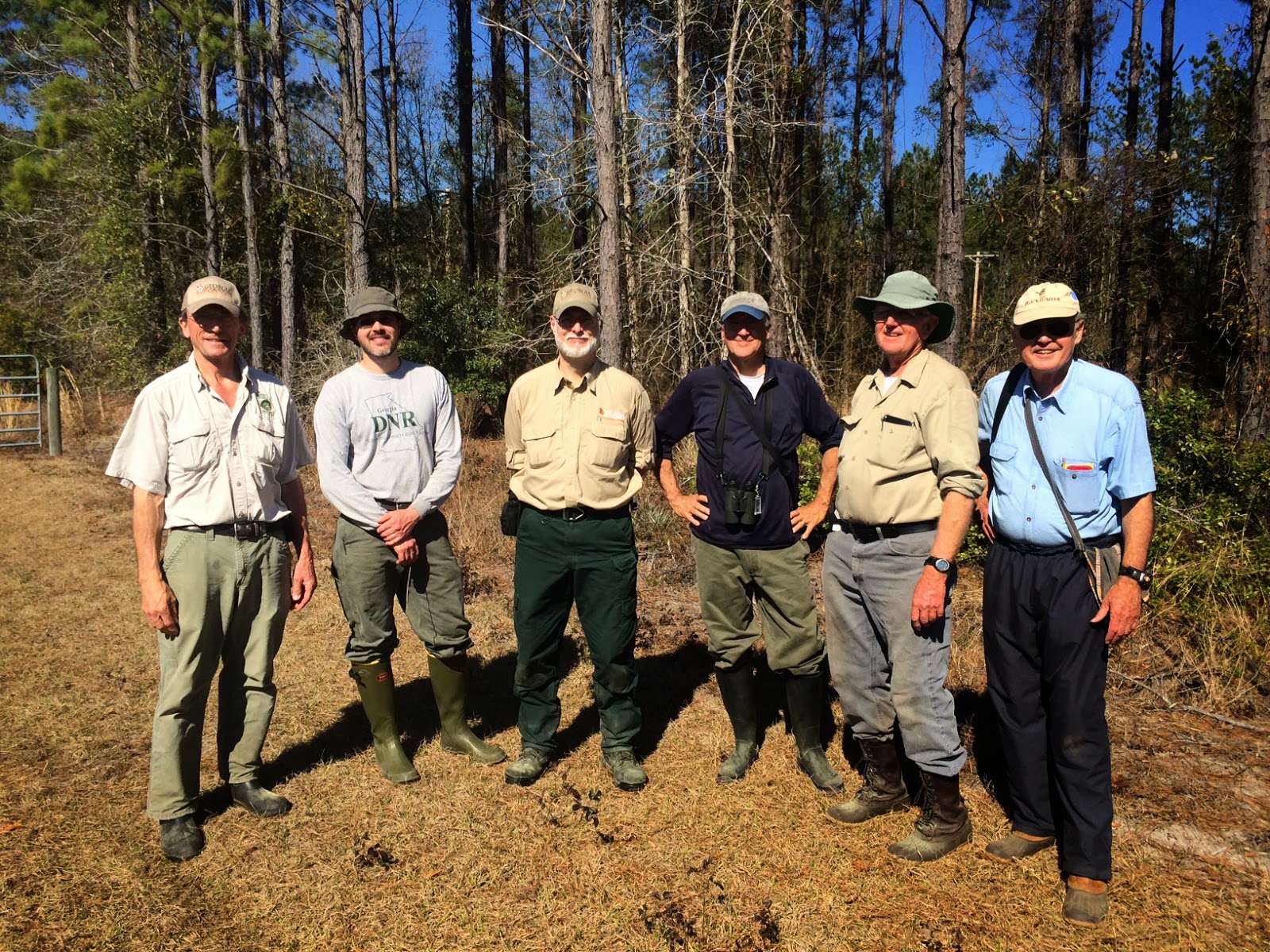I was to meet the group at the banding site at 9:00. I stayed roughly 18 miles from the meeting point, so I figured 1.5 hours would be more than enough time to reach it. A stalled freight train right across my path made life interesting, and it required a 4-mile detour to get back on track (I rode 35 total today). I made the banding session only a few minutes late. I was immediately introduced to the 6-member team which was comprised of 3 full time researchers and 3 very knowledgeable local birders who came to assist the efforts. Pictured here are (L to R) Ken, Eamonn, Todd, Bob, Eugene, and Sterling. They have segregated with GDNR researchers on the left and local birders on the right.
***CLICK FOR BIGGER IMAGES***
Ugh, roadblock
The Henslow's team
The plan was fairly simple. We would walk 2 defined transects looking for Henslow's sparrows. When we flushed one, we'd note where it landed and then position the mist net in such a way that we could reflush the bird into the net. We would then take wing measurements, weigh the bird, and band it before releasing it. This strategy was fairly successful, and we managed to band at least a dozen birds. We also recaptured at least 7-8 previously banded birds. Some of these birds had been banded 2 years ago in this exact spot. We know this since we recaptured them today. This demonstrates the fidelity with which these birds return to their wintering grounds. It also demonstrates that conserving land in their wintering grounds will ensure that these same birds and their descendants have a predicted place to stay during their non-breeding times in future years.
Positioning the net
It actually took me a while to see a Henslow's that I could count. The flushed sparrows would very often move only a short distance and then dive back into the grass. It was a while until one of the flushed birds landed on a bush and I could see it well enough to count it (#191). I did not get a photograph of this bird, but another cooperative bird a bit later did give me a few frames. The point is that I did not want to count birds that I could only identify after they hit net. Why do I mention this? The second photo below illustrates this point. This is a Le Conte's sparrow. It is the only one we saw or caught all day. When we flushed the bird I thought it looked different than the Henslow's we had been flushing, but it was only after it hit the net that we were able to conclusively identify it. So, I am not going to count this bird as it was the banding net that permitted me/us to identify it. It's painful, but its the right thing to do. We did, however, flush several Sedge wrens (#192) as consolation finds.
I coud juuuusssssttttt spot the Henslow's
Heavilty cropped view of above
The Le Conte's sparrow I won't count
Tomorrow looks like a bit of a washout with thunderstorms and strong south winds predicted. I think I am going to use tomorrow as a rest day and then make a ton of distance south on Saturday when the wind is supposed to swing around and blow from the north.








What an awesome experience! Thanks for sharing. The Le Conte's looks so small in the hand...
ReplyDeleteThat's Eamonn, not Amon. :)
ReplyDelete